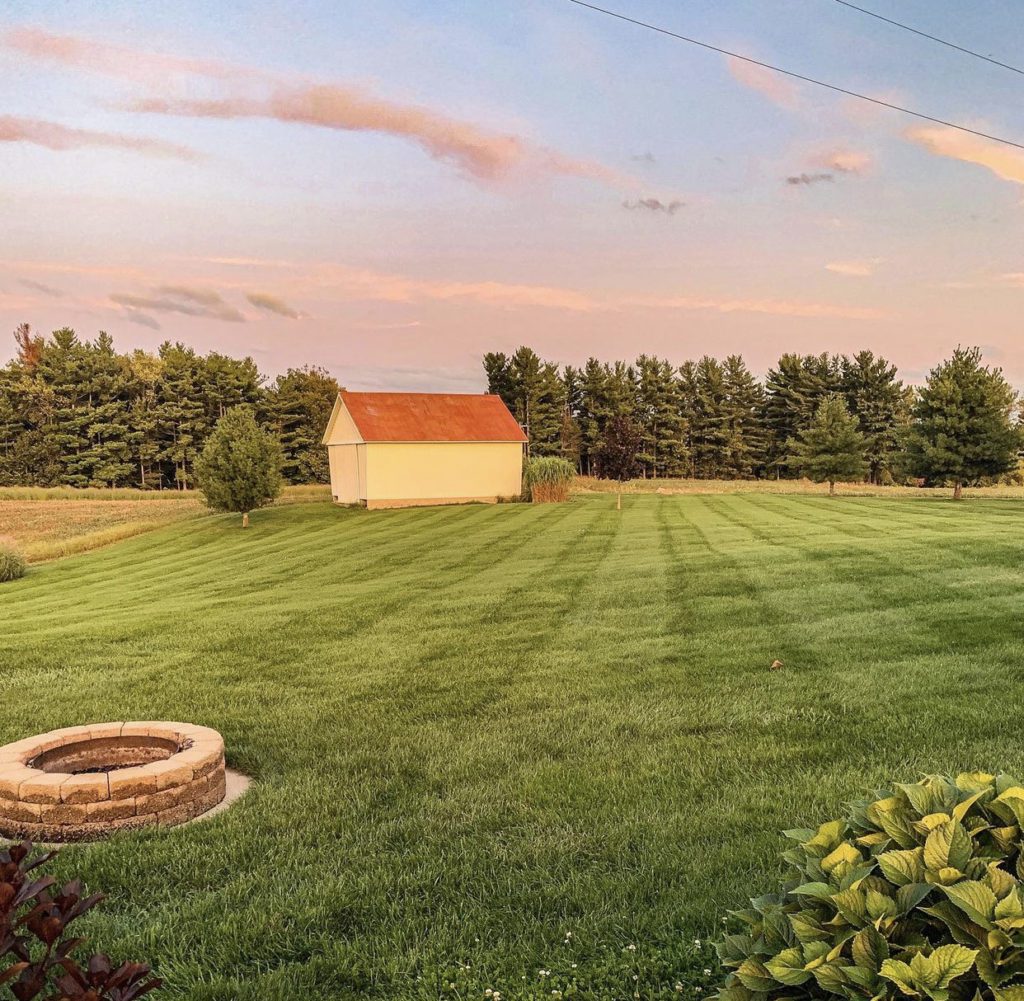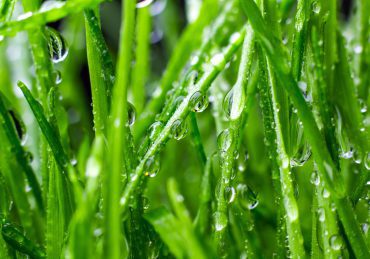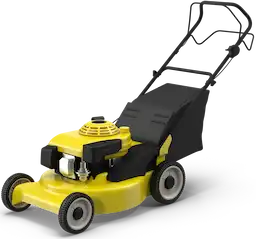Applying weed and feed at the right time can make a significant difference in the health of your lawn. You might wonder, is spring or fall the best time for this task? Timing is vital, and understanding the specific conditions your lawn needs can maximize the benefits of weed and feed. But what exactly are those conditions, and how can you guarantee you’re doing it right? There’s more to investigate in mastering this lawn care essential.
What Does “Weed and Feed” Actually Do?
To get the most out of “Weed and Feed,” you’ve got to apply it at the right time.
Your lawn needs to be actively growing, which usually means early spring or fall, when the temperatures are between 60°F and 90°F.
Timing is essential because it guarantees the herbicides effectively target weeds and the nutrients give your grass a healthy boost.
Easily hire the best lawn & landscape pros working in your neighborhood.
Why Timing Is Everything
Understanding why timing is everything when applying weed and feed can transform the health of your lawn.
Timing is essential because applying weed and feed in early spring, when temperatures range between 60°F and 90°F, guarantees effective weed control and grass nourishment.
Make certain your grass is damp for the product to adhere properly.
Apply in the late afternoon or early evening to prevent burning.
When to Apply Weed and Feed in the Spring
To know when your lawn is ready for weed and feed in the spring, wait until you’ve mowed it at least twice and daytime temperatures are consistently between 60°F and 90°F.
Aim to apply the product in the late afternoon or early evening when the grass is damp, either from dew or a light watering, to help it stick effectively.
Avoid applying if rain is expected soon, and give the herbicides at least 24 hours to work before you water the lawn again.
Key Signs Your Lawn Is Ready
Once the chill of winter has lifted and your lawn begins to show signs of life, it’s time to watch for specific indicators that it’s ready for weed and feed. Confirm the grass has been mowed once or twice and that daytime temperatures are between 60°F and 90°F. Applying a weed and feed product in the early evening helps prevent burn and boosts adherence.
| Indicator | Details |
|---|---|
| Mowing | Once or twice |
| Temperature | 60°F – 90°F |
| Weed Emergence | Dandelions, clover |
| Soil Temperature | Above 55°F |
Best Time of Day and Weather Conditions
After identifying the key signs that your lawn is ready for weed and feed, it’s important to evaluate the ideal time of day and weather conditions for application.
Apply in the late afternoon or early evening when temperatures are between 60°F and 90°F.
Make certain your grass is damp but avoid rain within 24 hours. This helps the weed and feed adhere, maximizing its effectiveness against weeds.
When to Apply Weed and Feed in the Fall

In the fall, applying weed and feed at the right time helps your lawn recover from summer stress while suppressing weeds.
Aim to apply the product when temperatures are between 60°F and 75°F, at least two months before the first expected frost.
Check the weather forecast to avoid rain immediately after application, as it can wash away the treatment before it takes effect.
Fall Lawn Recovery and Weed Suppression
As you shift from the vibrant growth of summer to the cooler days of autumn, it’s crucial to focus on fall lawn recovery and weed suppression by applying weed and feed at the right time.
To maximize effectiveness:
- Apply 6 to 8 weeks before the first frost.
- Verify temperatures range between 60°F and 85°F.
- Wait until the lawn is mowed at least twice.
These steps guarantee ideal absorption.
Timing Around Rain and Frost
When planning your fall lawn care, timing is everything for applying weed and feed effectively.
Make sure no rain is expected for 24 hours to let the product adhere. Avoid applying if frost is anticipated within a day, as it obstructs nutrient absorption.
Apply at least two months before the first frost, and make certain the soil isn’t too wet from recent rain for ideal results.
Easily hire the best lawn & landscape pros working in your neighborhood.
How to Apply Weed and Feed for Maximum Impact
To guarantee your weed and feed application is successful, start by mowing your lawn a few days in advance and making sure it’s damp before you begin.
Use a calibrated broadcast spreader to evenly distribute the product, and follow the manufacturer’s instructions closely.
Avoid applying during high temperatures or watering the lawn immediately after to prevent reducing the effectiveness of the treatment.
Pre-Application Prep
Before diving into applying weed and feed, proper preparation guarantees maximum impact.
To make certain your lawn care product works effectively, follow these steps:
- Mow your lawn 2-4 days before application, so the grass is at the right height.
- Water thoroughly the day before applying weed and feed to help granules stick.
- Choose a cool day between 60°F and 90°F, avoiding extreme heat.
Application Methods and Equipment
Although applying weed and feed might seem straightforward, using the right methods and equipment is vital for achieving the best results. Utilize a broadcast spreader for even distribution of the lawn fertilizer and weed killer. Confirm the lawn is wet before application to help the product stick. Apply in the late afternoon when it’s cooler, avoiding windy days. Follow these steps for maximum impact.
| Equipment | Key Tips |
|---|---|
| Broadcast Spreader | Adjust settings per manufacturer’s guide |
| Lawn Condition | Wet from dew or prior watering |
| Timing | Late afternoon, cooler temperatures |
| Weather | Avoid windy days |
What to Avoid
While using the right equipment and methods sets the foundation for effective weed and feed application, knowing what to avoid guarantees you don’t waste your efforts.
Avoid these common pitfalls:
- Extreme Heat: Applying during hot conditions can burn your lawn.
- Rainfall: If rain is expected within 24 hours, the product may wash away.
- Dormant Lawns: Confirm your lawn is actively growing for peak weed control.
Choosing the Right Weed and Feed Product for Your Lawn
When choosing a weed and feed product, start by deciding between pre-emergent and post-emergent formulas based on when you plan to tackle the weeds.
Consider your grass type to guarantee compatibility, as some products can be harmful to certain varieties like fine fescue or zoysiagrass.
Selecting the right formula tailored to your lawn’s needs will help you effectively control weeds while nourishing your grass.
Pre-Emergent vs Post-Emergent Formulas
Choosing the right weed and feed product for your lawn depends on understanding the differences between pre-emergent and post-emergent formulas.
A pre-emergent herbicide prevents weed seeds from sprouting, while a post-emergent herbicide targets existing weeds.
For effective lawn care:
- Apply pre-emergent in early spring.
- Use post-emergent in late spring to early summer.
- Combine both to manage weeds all season.
Consider Your Grass Type
Selecting the right weed and feed product for your lawn starts with understanding your grass type.
Different grass types, like fescue or Bermudagrass, have unique nutrient needs. Check the NPK ratio to guarantee compatibility, like a 28-0-3 ratio for Kentucky Bluegrass.
Products like Scotts® Turf Builder® are versatile for mixed lawns, but some, like Centipedegrass, need specific formulations.
Tailor your choice for ideal results.
Weed and Feed Safety and Environmental Precautions
When applying weed and feed, it’s essential to keep children and pets away from treated areas until the product has dried to guarantee their safety.
Always prioritize eco-friendly practices by following label instructions and applying the product under ideal conditions to minimize environmental impact.
Choose calm days for application to prevent drift and store products properly to protect both your family and the planet.
Pets and Children
How can you assure the safety of your pets and children when applying weed and feed to your lawn? Follow these steps:
- Read the product label carefully for specific instructions and precautions.
- Keep pets and children away from treated areas until the lawn dries, usually 24 hours.
- Store products securely out of their reach to prevent accidental exposure.
These precautions will help assure a safe environment for everyone.
Eco-Friendly Considerations
Although applying weed and feed can enhance your lawn’s health, it’s essential to reflect on eco-friendly practices to guarantee safety for both your family and the environment.
Opt for organic alternatives, reducing reliance on chemical herbicides and fertilizers.
Wear protective gear, follow label instructions, and respect local regulations to minimize environmental impact.
Keep children and pets away from treated areas until it’s safe.
Still Wondering When to Apply Weed and Feed? Let LawnGuru Help
If you’re still unsure about when to apply weed and feed, LawnGuru can make it easy for you.
With same-day service and local experts ready to assist, you’ll get timely and effective lawn care without the guesswork.
Plus, our transparent pricing guarantees you know exactly what you’re paying for, so you can focus on enjoying a beautiful lawn.
Same-Day Service, Local Experts, Transparent Pricing
When you’re unsure about the best time to apply weed and feed, LawnGuru’s local experts are ready to help with their same-day service.
We guarantee:
- Timely treatment with same-day service for ideal results.
- Transparent pricing, so you know costs upfront without hidden fees.
- Customized care, tailored to your lawn’s needs.
LawnGuru takes the hassle out of lawn care, making it easy for you.





